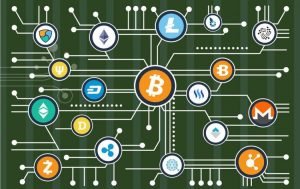Blockchain Technology in Banking: Everything You Need To Know
Blockchain technology has been one of the most buzzworthy topics in banking for years, and although it can seem like just another computer term, it’s very relevant to your daily life and the future of banking as a whole.
This blog will walk you through everything you need to know about Blockchain in banking, including how it works, what some banks are currently doing with it, and why they’re using it in the first place. We’ll also talk about how this technology will likely change how we do banking in the future.
Let’s get started!
Blockchain in Banking: The Basics
Blockchain has become one of today’s hottest technologies, primarily due to its application in cryptocurrencies. Many financial institutions are now hiring blockchain developers or companies specializing in blockchain development to help implement and take advantage of distributed ledger technology. But what is Blockchain? And how can it be used in banking?
Blockchain is a distributed ledger technology (DLT) that uses cryptography to create permanent records on a public network. These records are stored as blocks that are linked together using cryptographic hashes.
Each block contains a timestamp and transaction data. Blockchains are decentralized and don’t rely on any central authority to verify transactions. Instead, every computer connected to a blockchain network must agree on each transaction before it can be recorded permanently in the blockchain database.
Blockchain networks use consensus algorithms, so each new block added to the chain requires consensus from nodes across the entire network before being accepted into the blockchain database.
In other words, Blockchain offers a more secure way to store and share information than traditional databases.
What are the Uses of Blockchain Technology in Banking?
Currently, most of Blockchain’s top use cases in banking are related to transaction processing. But that doesn’t mean it can’t have a wide range of uses. Blockchain could help with ATM fraud, identity management, and smart contracts, too.
It may also be possible to develop blockchain-based systems for other industries like healthcare or insurance, but they’re still just ideas at present. For now, though, let’s focus on how Blockchain is being used in banking today.
-
Reduce Risk:
The first thing banks look for when assessing new technologies is whether they will reduce risk. In Blockchain’s case, there are two main risks to reduce—counterparty and operational risks.
Counterparty risk refers to when one party involved in a financial transaction goes bankrupt or fails before completing their end of an agreement.
Blockchain can help by tracking transactions so that if one side fails to complete their part of a deal, it’s clear who was responsible. Operational risk refers to errors made during day-to-day business operations. These include security breaches and human error, which Blockchain aims to eliminate through automation.
-
Improve Efficiency:
Blockchain has been touted as having potential cost savings in excess of $20 billion per year for big banks alone. There are several ways. Blockchain might do this.
First, Blockchain reduces both counterparty and operational risk. This means less money spent on compliance, auditing, and regulatory costs. Second, Blockchain automates many processes currently done manually (like reconciliations).
This frees up staff time to focus on more complex tasks. Third, Blockchain allows for smart contracts—automated agreements between parties based on certain conditions being met. Once these conditions are met, funds are automatically transferred between parties without any manual intervention.
-
Enable New Services:
Blockchain could enable entirely new services within traditional banking models. One example is trade finance, where Blockchain can simplify paperwork and cut down settlement times from days to minutes.
Another example is peer-to-peer lending, where Blockchain removes some intermediaries involved in lending to individuals. Other examples include cross-border payments and loyalty programs.
-
Create New Revenue Streams:
Blockchain technology enables businesses to create value through improved efficiencies and entirely new revenue streams. One way it does this is through tokenization—turning physical assets into digital tokens on a blockchain network, then selling those tokens via Initial Coin Offerings (ICOs) or similar fundraising mechanisms.
5. Expand Global Reach: Blockchain’s distributed ledger can allow for secure, transparent, and fast cross-border transactions. This is particularly useful in developing countries, where a lack of trust or a weak legal system makes it difficult to conduct international business.
-
Support New Applications:
If you want to build a blockchain-based application on your own, you’ll need to hire blockchain developers in India. They’ll work with you to design the app and build the infrastructure needed to support it. This includes things like smart contracts, blockchains, and APIs.
-
Adopt Blockchain to Support Legacy Systems:
Many banks are using Blockchain to help support their existing legacy systems. This is known as blockchain-as-a-service (BaaS), where a bank keeps its existing IT in place but adds blockchain services.
This can help reduce the risk of disruption while allowing the bank to take advantage of new features like smart contracts and faster transaction speeds.
The Future of Banking on the Blockchain
Blockchain technology is being used to revolutionize nearly every industry, including banking. Today, many banks have hired blockchain developers to help develop their blockchain-based products and services.
Banks Hire Blockchain Developers for a Reason. Blockchain Technology Could Save Them Millions. Blockchain has been described as a ledger system that allows multiple parties to record transactions without requiring any central authority—which means it has some pretty incredible applications for various industries.
And because Blockchain helps reduce transaction costs, manage risks, improve transparency, and increase trust between parties—it could be hugely beneficial for financial institutions like banks or investment firms.
One report from Santander InnoVentures estimates that blockchain technology could save banks $20 billion per year by 2022 (up from $1 billion today).
Banks Are Developing New Products With Blockchain Technology, But not all blockchain development is about cost savings. Banks also use blockchain technology to develop new products and services for their customers, including mobile payments apps and digital currencies (like bitcoin).
For example, one bank is working on a new app called KodakOne that will allow photographers to register their work on Kodak’s blockchain platform; they can then license their photos through KodakOne’s marketplace and receive payment directly through its cryptocurrency.
Blockchain Developers Can Work with Many Different Industries If you want to become a blockchain developer, you don’t have to limit yourself to banking. There are plenty of other options available.
Blockchain developers are in high demand across many different industries, including healthcare, supply chain management, insurance, real estate investing/brokering/insurance sales, and more.
Read Also: Why Investing In Cryptocurrency Is Profitable Than Any Other Business?
Conclusion
Blockchain is an implementation of Distributed Ledger Technology (DLT). As per our discussions, it has several benefits to be utilized by banks. DLT can provide faster and more secure transactions across networks without a centralized authority or central server.
Today, blockchain applications are slowly emerging in the banking industry. Banks all over the world hire the top blockchain development company in India. Blockchain developers from India are hired for their high-end expertise and lower cost advantage over other nations.

















